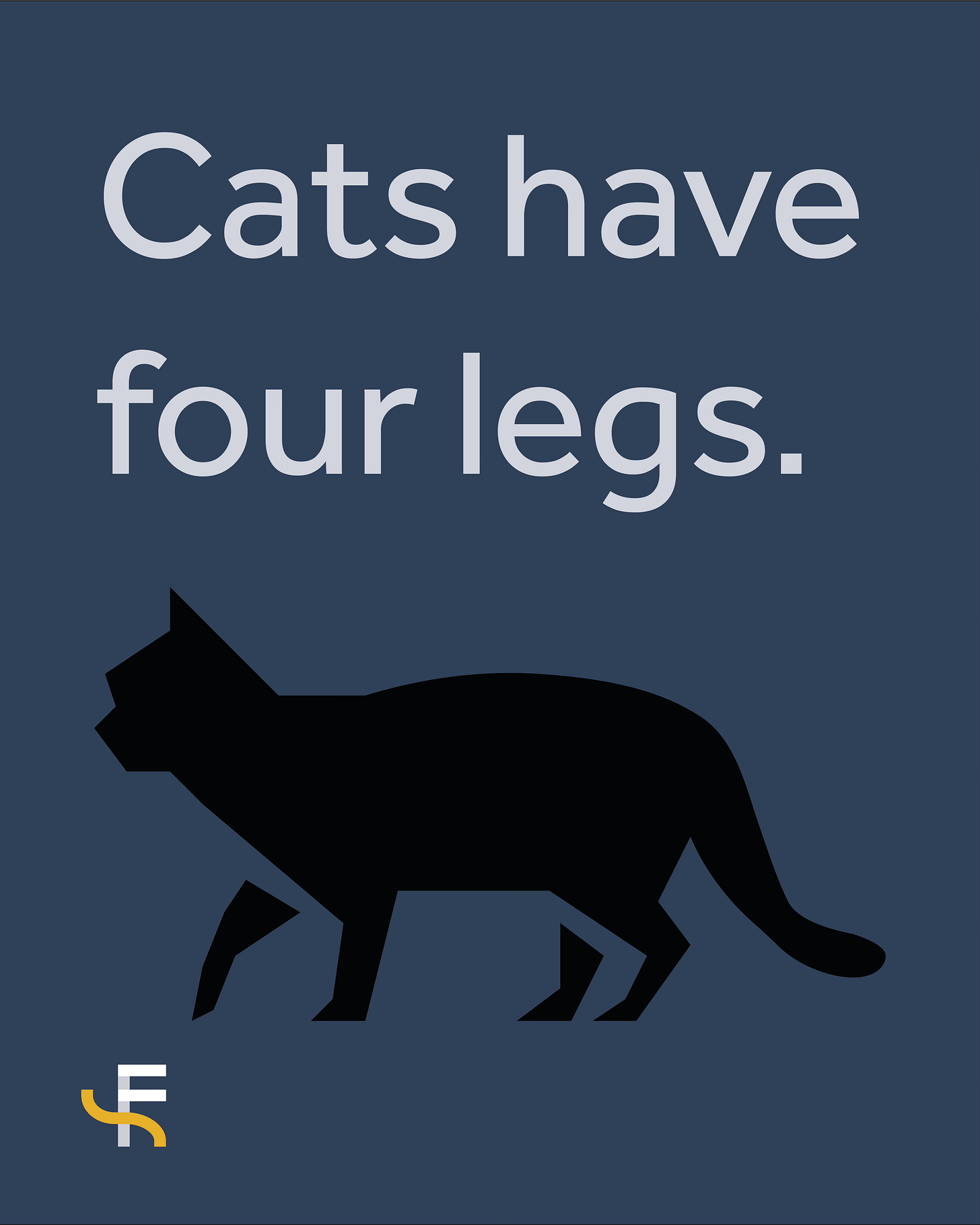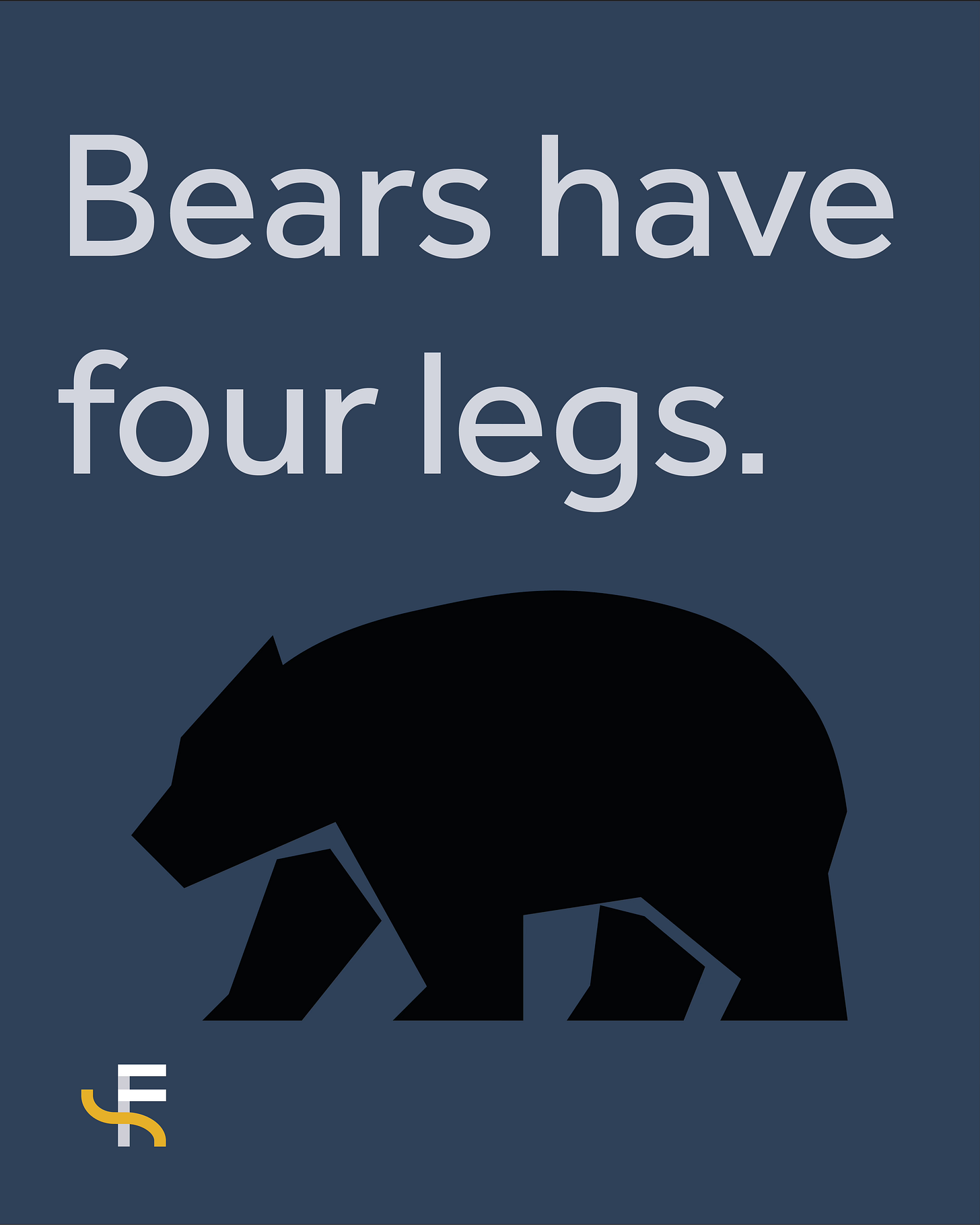How can you make people remember you?
How you can make stories about your work memorable; Don’t be afraid to shock your audience; New video tool from Google; A Factual Storytelling School special offer
Which of the following insights are you more likely to notice, and remember, from the four images shown here?
Cats have four legs
Dogs have four legs
Jellyfish have 64 anuses
Bears have four legs
?
It’s likely to have been the insight about the jellyfish.
You may have noticed it because jellyfish are unusual animals relative to the more familiar cats and dogs often kept as pets, and bears.
You may have noticed it because the insight mentioned anuses - a much more unusual, provocative and challenging organ to mention than legs.
Or because it was written on the bold yellow background below, rather than the same blue used for the others.
Or because the font used was different.
Either way, you likely paid attention to the jellyfish insight (which is true by the way: Box jellyfish have four brains and 64 anuses), and will better remember it, due to what is known as the Von Restorff effect, which suggests that the weirder something seems, the more we remember it.
Behavioural scientist Hedwig Von Restorff discovered this tendency back in 1933, when conducting a series of experiments on how people recall words.
She found that people more easily recall usual words in any list, either because the word in question is longer than the rest, in a different typeface or language, emboldened, contains a number, or is in a different font etc.
It may seem obvious that the jellyfish insight is the most memorable, especially given it’s obviously unique design and presentation. Just as it may seem obvious you’ll notice and recall the presence of a red apple among a bowl of green apples.
But when communicating about themselves or their work, many organisations and people ignore the Von Restorff effect - in that they fail to understand the advantage they gain by saying something unique, that stands out from the crowd or competition.
In our Factual Storytelling Course, which you can currently enrol in for just £49.50, we dedicate a module of 10 lessons to tips and techniques for How To Create Engaging Content.
Within that module are lessons coaching Why You Need A Good Hook, and the Different Types of Engaging Introduction.
And a core teaching within both, is that one way to create engaging content, is to share unusual, unknown or fascinating insights, or reveal novel information that is shocking, mystifying or bizarre, - in short, to harness and exploit the Von Restorff effect by communicating something unusual about your work.
Something that stands outside the norm or your daily business or the communications of your competitors.
Do that, and your message will be better noticed by your audience. And it will be better recalled, giving you that all important competitive edge.
It’s a fantastic way to get people to remember you.
Don’t be afraid to shock your audience
Following our recommendation that you exploit the Von Restorff effect, is the related suggestion that you shouldn’t be afraid to shock your audience when communicating about your work.
One of the most important principles when communicating, is that your first task is to actually win the attention of your audience. If you fail to do that, everything else you do will be pointless, as you will be talking to no-one.
One of the best ways to get other’s attention, is to begin your factual story with an engaging introduction. And one of the most engaging types of introductions, are those that shock.
You can shock your audience in a light-hearted way. By unexpectedly, and knowingly mocking yourself or your organisation. Or by intentionally saying something outrageous, or funny. Before then adding context that makes sense of, and brings meaning to these unexpected first words.
Or you can shock in a serious way.
For example, many organisations work to achieve good, but that often means reporting the challenges they are working to overcome.
Global and public health agencies, charities and organisations seeking to improve human welfare often create powerful introductions that highlight a disparity or injustice, such as the number of children who live without access to fresh water, or can’t yet read, or how many people may die each year from preventable diseases.
They do so because it shocks the audience, and helps solicit an emotional reaction.
When done with care, and appropriately, shocking your audience is a valid way to attract their attention towards an issue, campaign or a just cause.
New video tool from Google
Startling new advances in AI-generated video just keep coming.
And we’ll keep sharing them, as they will almost certainly become a part of the future toolkit you can use to create videos to communicate and market your work.
The latest from Google is called Veo, which promises to be the company’s most capable generative video AI yet.
According to the company’s own marketing material, Veo “can create high-quality, 1080p clips that can go beyond 60 seconds.
From photorealism to surrealism and animation, it can tackle all kinds of visual styles, and even captures the nuance and tone of prompts - offering an unprecedented level of creative control.”
Sign up to try some of Veo’s features in VideoFX, a part of Labs.Google.
Enrol in the Factual Storytelling School: 50% discount special offer
We’ve briefly mentioned this above, but for a limited time you and your colleagues can enrol in the Factual Storytelling School, and receive full access to over 13 hours of tuition and a 450 page Factual Storytelling Handbook, for just £49.50.
Go to the Factual Storytelling School checkout here, enter the code enrolnow, and gain a 50% discount on the enrolment fee.
If you’re thinking of joining for yourself, you’ll learn how to advance your work, career and become a much more effective communicator. You’ll learn how to produce a range of professional content formats, including news, feature and opinion articles, as well as produce engaging reports, presentations, videos and podcasts.
If you’re thinking of enroling colleagues, your team will learn how to find and identify stories in their work, and better share them inside your organisation and externally with customers, clients and collaborators.
The course can be accessed online, from anywhere, including by office and home workers, and completed at your employees’ pace.
When you consider that poor communication costs organisations an average of $12,506, each year, per employee (The State of Business Communication 2023 report. Grammarly), enroling in The Factual Storytelling School is perhaps the most cost-effective step you can take to supercharge your organisation’s performance.
Enrol now, skill up and help boost your corporate effectiveness, impact, reputation and employee engagement.







